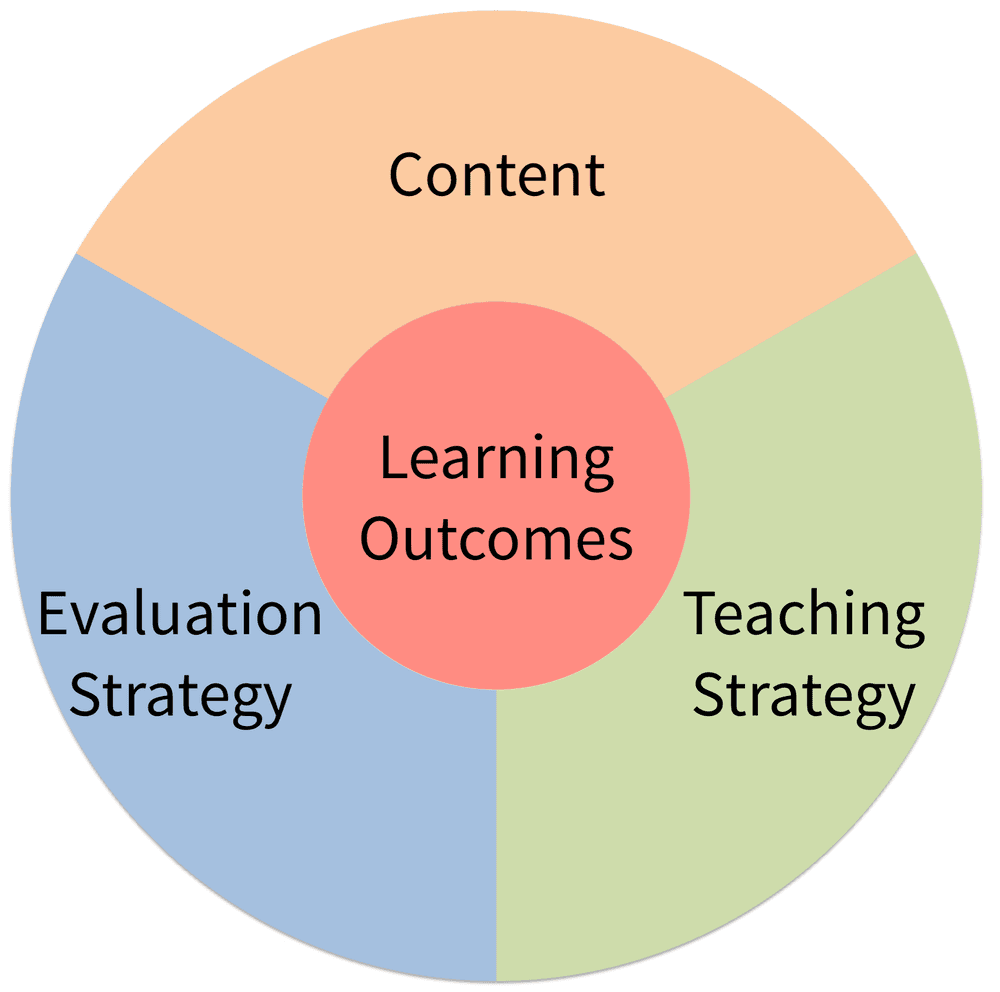Beta
Background Reading
How we designed our modules
Each module is centered on the fundamental question: What are the learning outcomes I want course participants to achieve? From there, we designed content, teaching strategy and evaluation strategy of the modules, which are all aimed to address the pre-defined learning outcomes.
Let's go into these concepts very briefly:
Learning Outcomes (not to be confused with learning objectives)
These are generally formulated in the form of "By the end of this module, participants must be able to: ...". Learning outcomes are clearly measurable competences your participants will acquire. They can be deducted form the more high-level learning objectives.Content
Having identified the desired results in the form of learning outcomes we can start to work backwards. We ask ourselves: what are the skills that will demonstrate achievement of the learning outcomes? And what content is required to support those skills? This makes it easier to prioritize on what material to cover and which content to cut away.We provide all relevant material (slides, assignments, background readings, as well as teacher's notes with valuable advice) in the module descriptions.
Teaching Strategy
This part is very much depending on the context, the participant's background, the available staff and resources, etc. Keeping in mind the learning outcomes we want to cover, we ask ourselves the following questions:- What types of face-to-face interactions do you want to have with learners?
- What types of online interactions?
- What types of interactions do you want learners to have with each other?
- Case Studies
- Debate
- Group Work
- Hands-on Labs
- Peer Instruction
- Project-based Learning
- Role-play
- Small Group Discussion
- Team-based Problem-solving
Evaluation Strategy
we can define an evaluation strategy, i.e. determine the acceptable evidence that a participant has reached a specific learning outcome. Evaluation or assessment can be of summative nature (e.g. by grading the participant's performance) or of formative nature (e.g. in-class feedback, peer-review).In short, good assessment techniques both assess and teach; the time spent doing these assignments helps participants learn more effectively and efficiently. Learn more.
Summative vs. formative assessment
Cited form: CMU Eberly Center for Teaching Excellence & Educational Innovation
Formative assessment
The goal of formative assessment is to monitor the participants's learning to provide ongoing feedback that can be used by instructors to improve their teaching and by participants to improve their learning.More specifically, formative assessments:
- help participants identify their strengths and weaknesses and target areas that need work
- help faculty recognize where participants are struggling and address problems immediately
- draw a concept map in class to represent their understanding of a topic
- submit one or two sentences identifying the main point of a lecture
- turn in a research proposal for early feedback
Summative assessment
The goal of summative assessment is to evaluate the participant's learning at the end of an instructional unit by comparing it against some standard or benchmark.Summative assessments are often high stakes, which means that they have a high point value. Examples of summative assessments include:
- a midterm exam
- a final project
- a paper
- a senior recital
The works on this site are licensed under a Creative Commons Attribution-NonCommercial-ShareAlike 4.0 International License.
Beta test phase ongoing. Content will change regularly!
Copyright © 2018. Some rights reserved.
